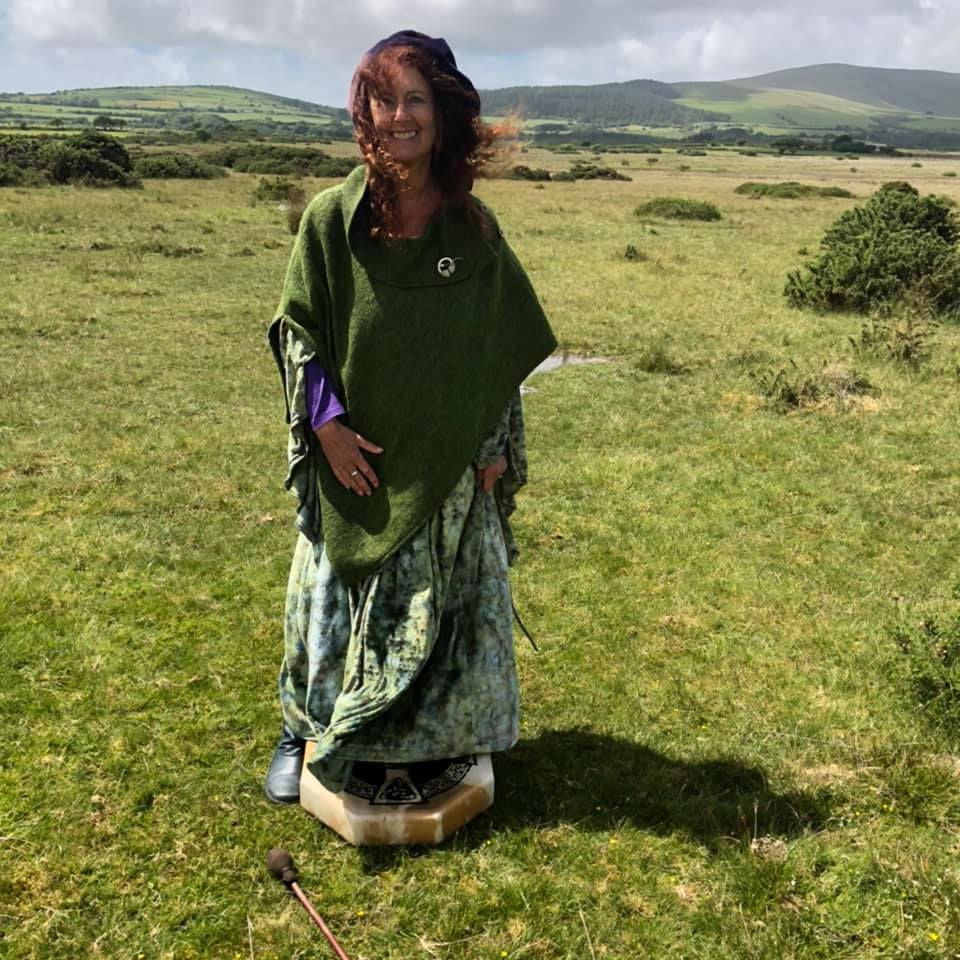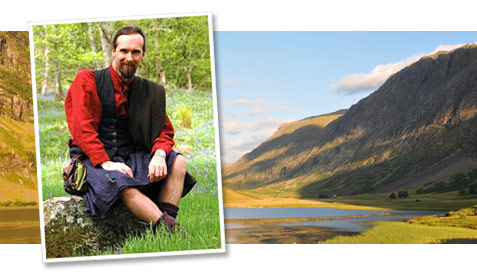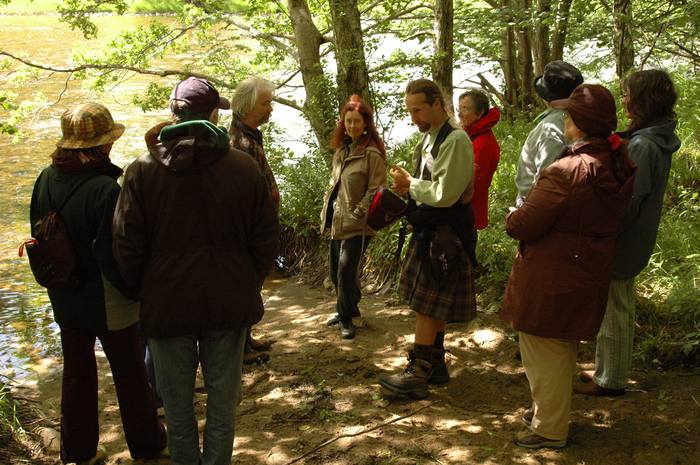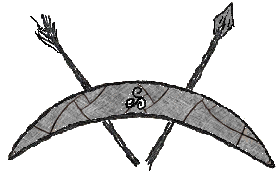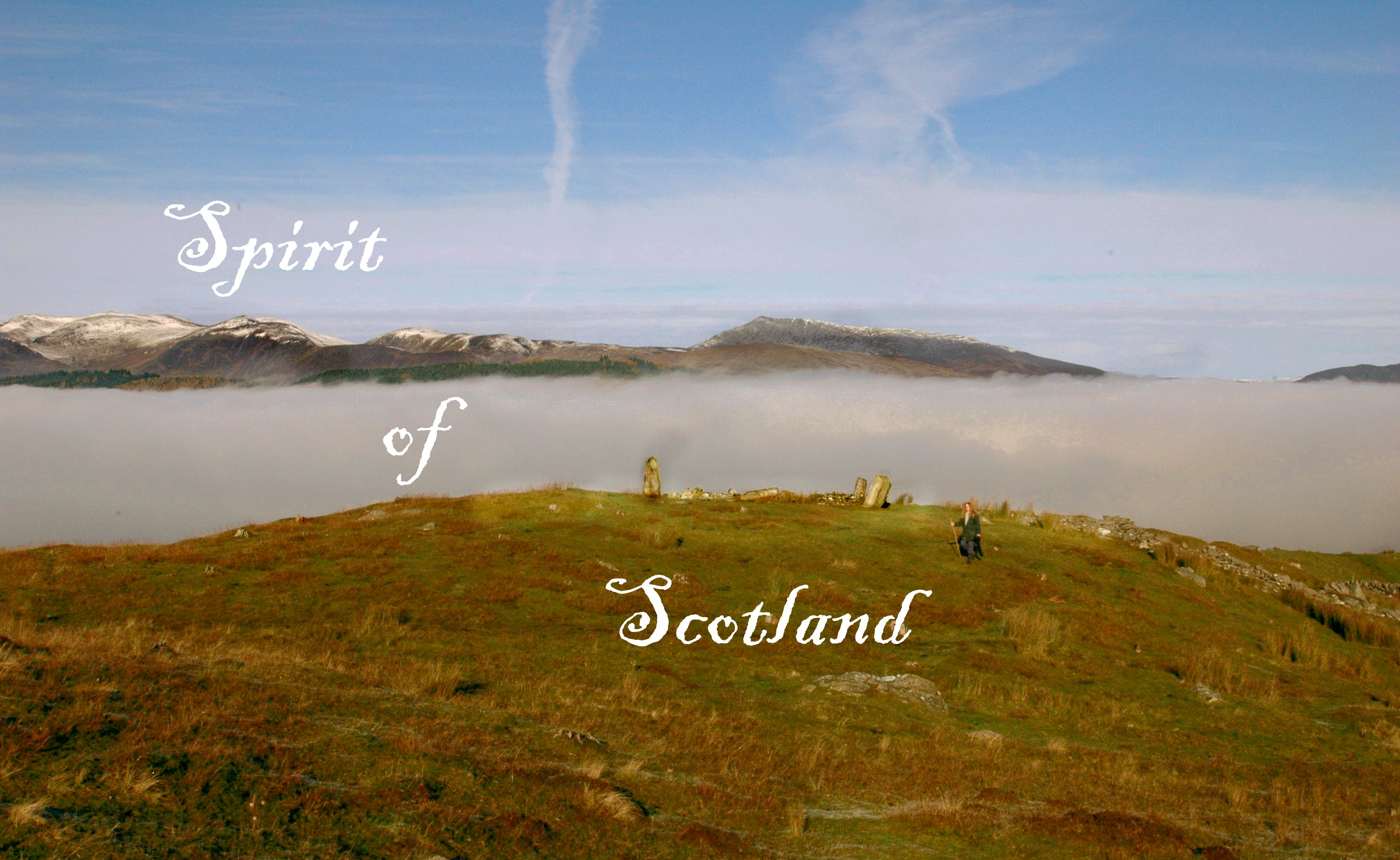
Spirit of Scotland Tour
(13 days, 12 nights)
The Pilgrimage
 5000 year old rock art.
5000 year old rock art. All pics from tour.
Embark on an unforgettable odyssey to some of the most spectacular sacred sites across Scotland, including the megalithic wonders of Kilmartin Glen, the holy island of Iona, Skye and the secret placs of the Goddess in "The Long Crooked Glen of the Stones". We journey from the rich Lowlands of Rosslyn Chapel near Edinburgh to the rugged seascapes and islands of the west coast and back, covering four different regions of Scotland - two coastal, one islands, one remote Highlands.
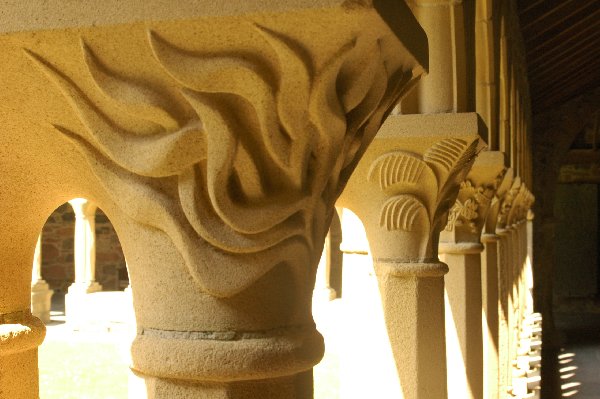 20th century rock art:
20th century rock art:The spiritual beauty of Iona abbey
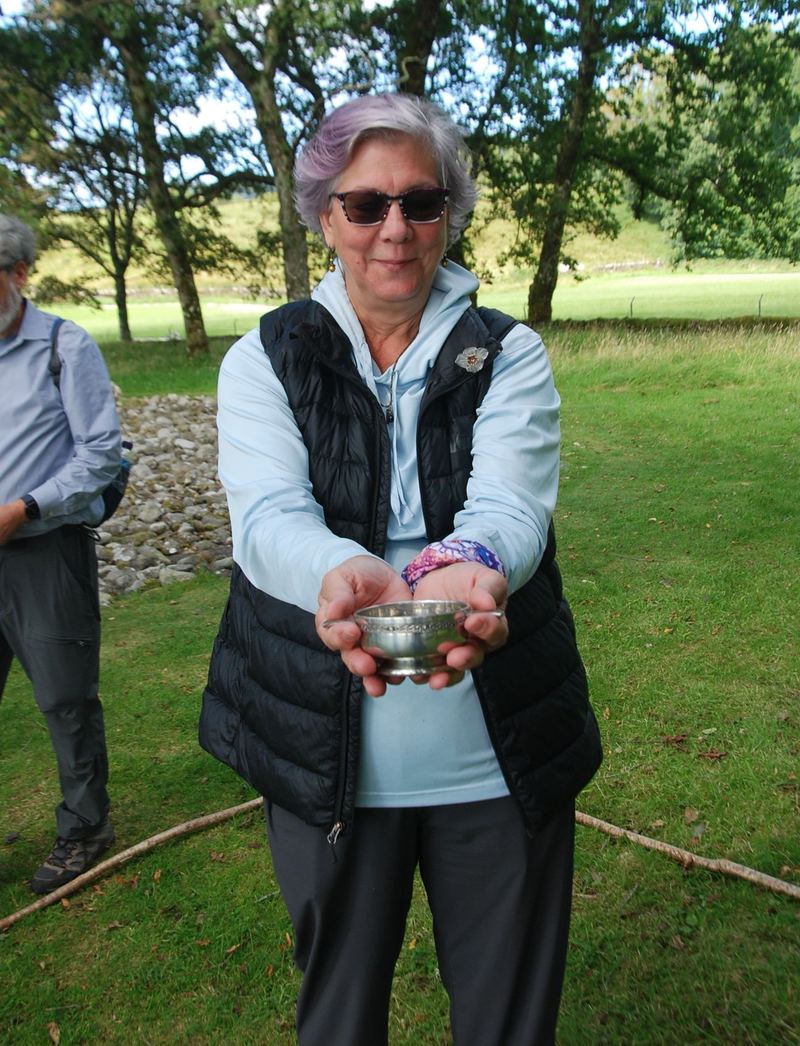 Sharing the drinking cup at a stone circle
Sharing the drinking cup at a stone circleTravel with a small group of six to eight like-minded people to the sacred places in a land of incomparable beauty and contrast. We will follow the ancient tellers of Scotland's unfolding story, those who have left their signatures on the land in the form of Neolithic stone circles and cairns, medieval abbeys, and imposing castles. You'll be guided by a Highland tradition keeper and storyteller (a Seanachaidh). Hearing the oral history of the inhabitants will add a diffferent facet to your understanding. Tale and landscape blend to reveal the sacred ways in which our ancestors revered the many and varied faces of Spirit. Our journey through sacred Scotland will truly be a pilgrimage of the soul.
Who is this tour for?
- It is for those who are interested in the relationship between a landscape and the people who live within it, and how that creates the native Celtic spirituality, both pagan and Christian. There is much to discover in history, botany, Gàidhlig language...
- It is for travelers who prefer spending more time in nature than in a vehicle. These are active tours (see the important Activity Note at page foot).
- While not required for this pilgrimage, many prior guests have some knowledge or spiritual practice that they bring to the tour.
- It is for those who prefer a smaller group of travellers (I now take 8 max).
- There is the opportunity to hold ceremony at some of Scotland's ancient sites.
- It is for those who want to see parts of Scotland beyond the tourist haunts (indeed, we actively avoid them).
Itinerary
Day One
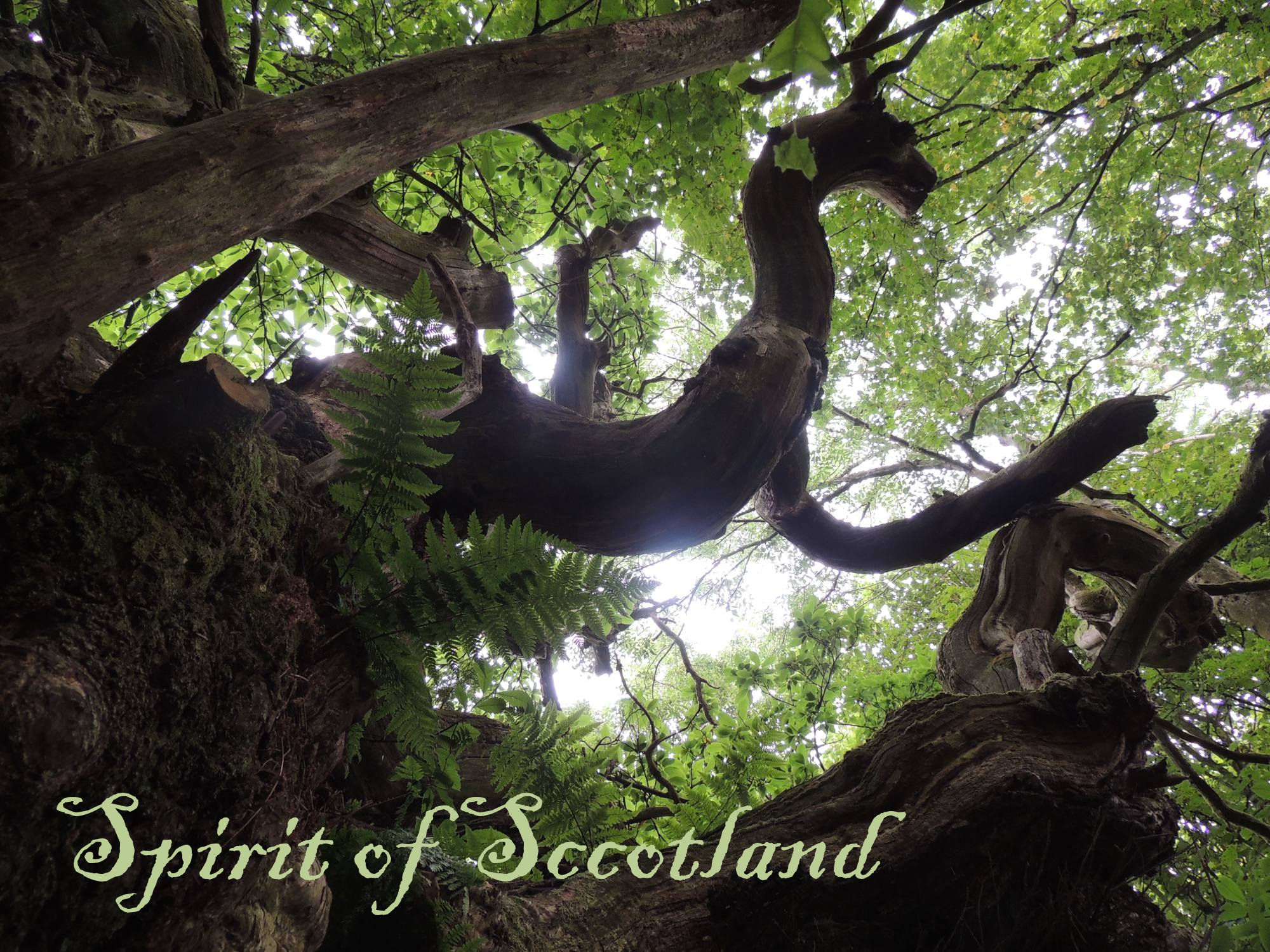 The dragon tree of Rosslyn Glen
The dragon tree of Rosslyn Glen
 Just one of the Chapel's many sacred carvings
Just one of the Chapel's many sacred carvings
We meet in Edinburgh and the journey begins! We visit the exquisite Rosslyn Chapel, steeped in stories of the Knights of the Crusade, starting with a walk in beautiful Rosslyn Glen, a place almost entirely overlooked by Chapel visitors, but part of Rosslyn's beauty and story.
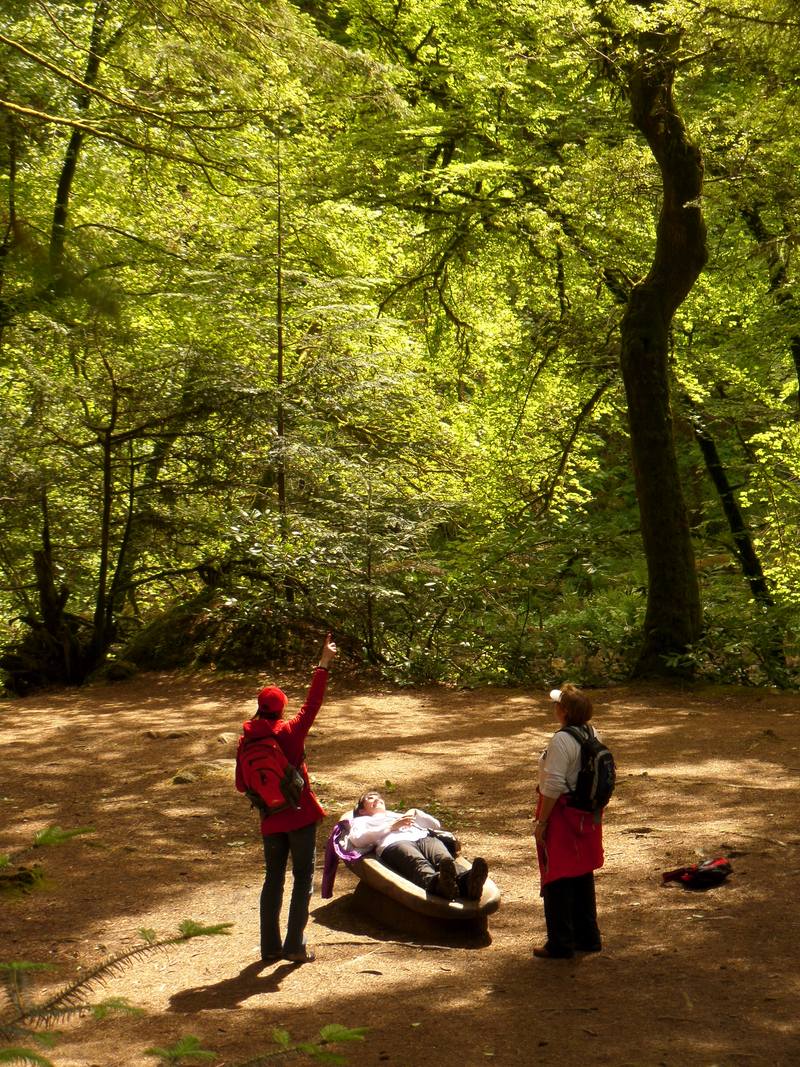 Contemplating the Beauty
Contemplating the Beauty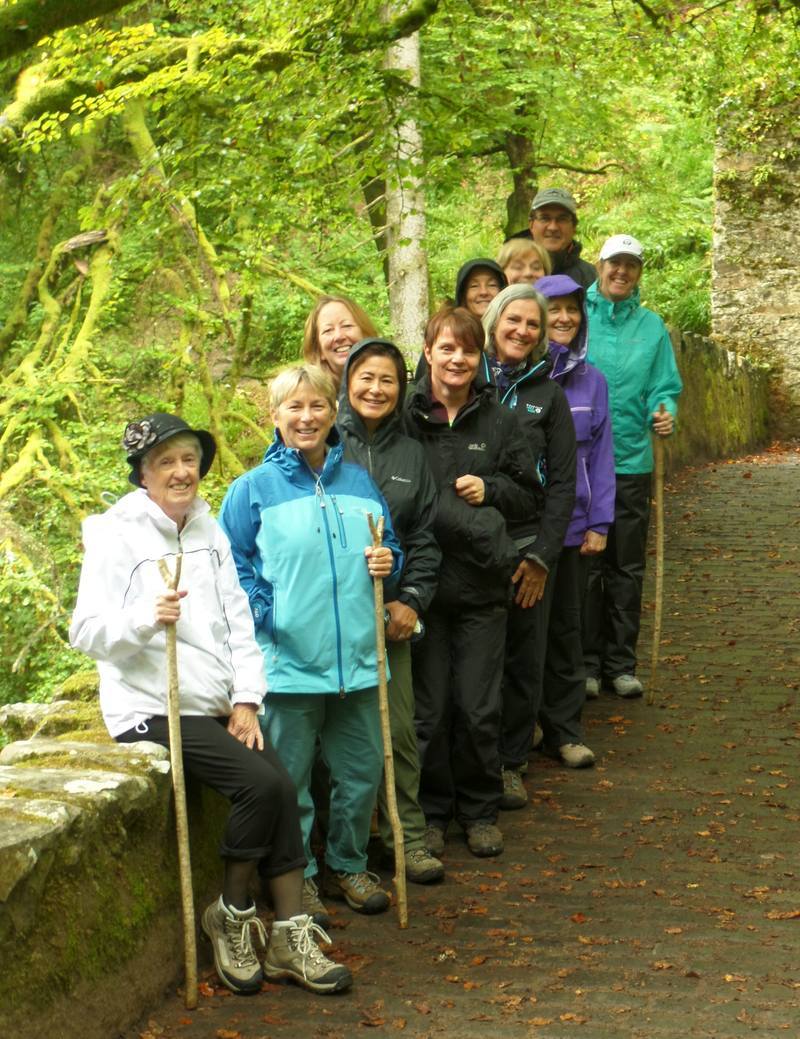 The Homage to Poetry
The Homage to PoetryWe journey North by West this afternoon, into the Highlands of Scotland, stopping at a place that offers an homage to Celtic ancient poetry, the arts being so much a part of the spirit of Scotland. To set the scene, we'll visit our first stone circle, one that is largely forgotten and rarely visited. Your first night will be in a pretty Highland town, the haunt of na h-Uruisgean (water dieties).
Days Two and Three
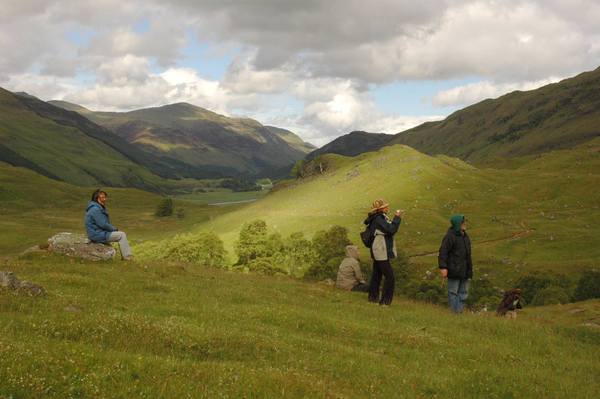 Contemplating the Beauty
Contemplating the Beauty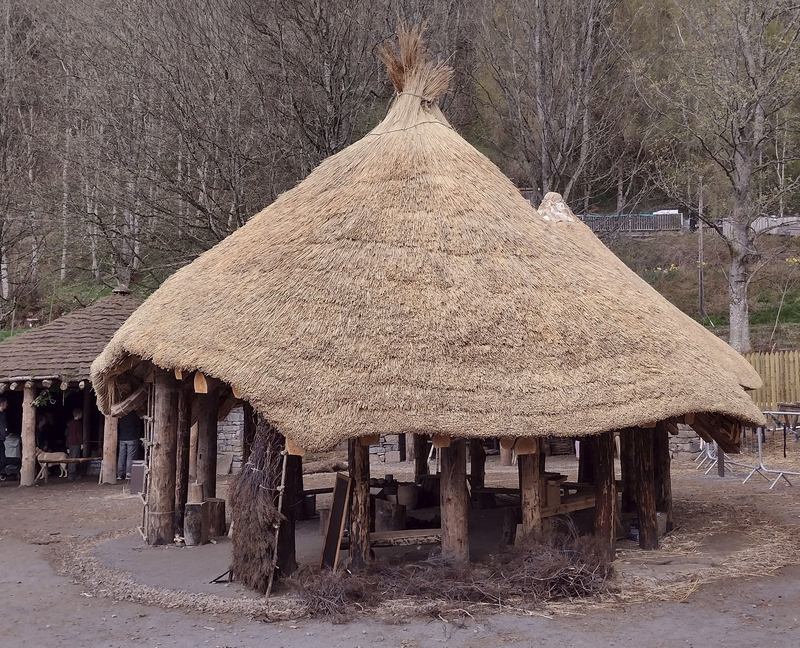 The Iron Age village
The Iron Age villageWe get remote for the next two days as we journey into the very heart of the Highlands. You'll visit an abandoned village where a famous seeress once lived. You'll hear some of her prophetic words (translated into English). We'll visit a stone circle where we can introduce David Cowan's work on ley lines and telluric energy. Many of the sites have active energy, Telluric, as David calls it, so if you have that sensitivity, you can test out his work.
We'll visit a reconstructed Iron Age village (which I helped build) to give you a sense of the domestic, the everday lives of the people whose spiritual practices you are investigating. In the afternoon, I'll hike up a gorge associated with the water dieties. You can join me or if you prefer, spend time in the town, or in our beautiful lodging to journal.
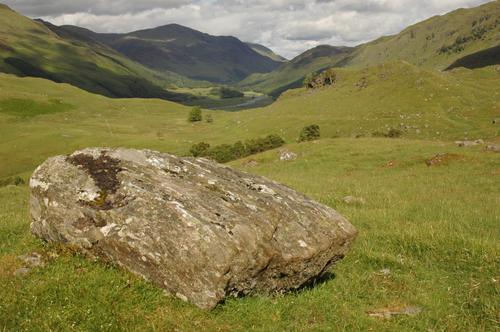 A Glen of dramatic light
A Glen of dramatic light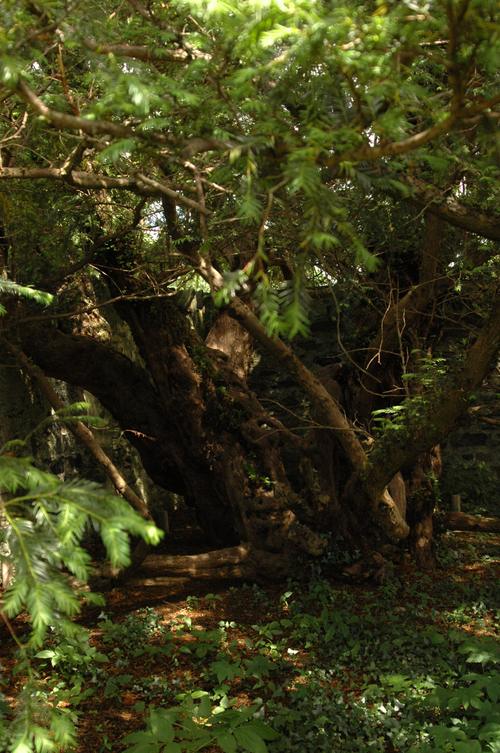 The Oldest Tree in Europe?
The Oldest Tree in Europe?The second day will be spent in a place is known in Gàidhlig as The Long Crooked Glen of the Stones, one of Scotland's hidden gems (which is why I don't give its map-name here) with a dense collection of sites spanning several thousand year along the glen's thirty mile length, including one of the world's great, ancient trees. We'll translate local place names to identify the early Celtic Christian Saints' settlements in the Glen. Much that is hidden to the stranger's eye will be revealed. There will be a one hour hike up a mountain to an unmarked holy site. Well worth the climb.
Day Four
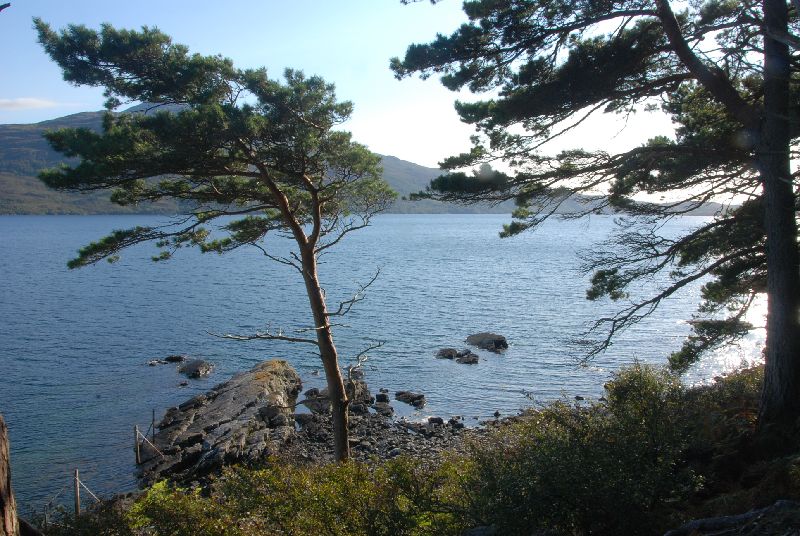 Scotland's West Coast
Scotland's West Coast Viking Land and Sea
Viking Land and SeaToday we head through some of the remotest parts of the Highlands towards Scotland's West Coast. Along the way we'll stop at a waterfall celebrated in poetry and a poet celebrated in stone, both tying to our theme of spirituality found in the landscape and in the Celtic arts. The views today will be dramatic, fearsome, intimidating even. Having joureyed far, we come to rest amidst the Viking terriroty of the Eilean a'Cheò, the Isle of Skye. We sleep with our feet almost in the ocean in one of the most serene places on the west coast.
Day Five
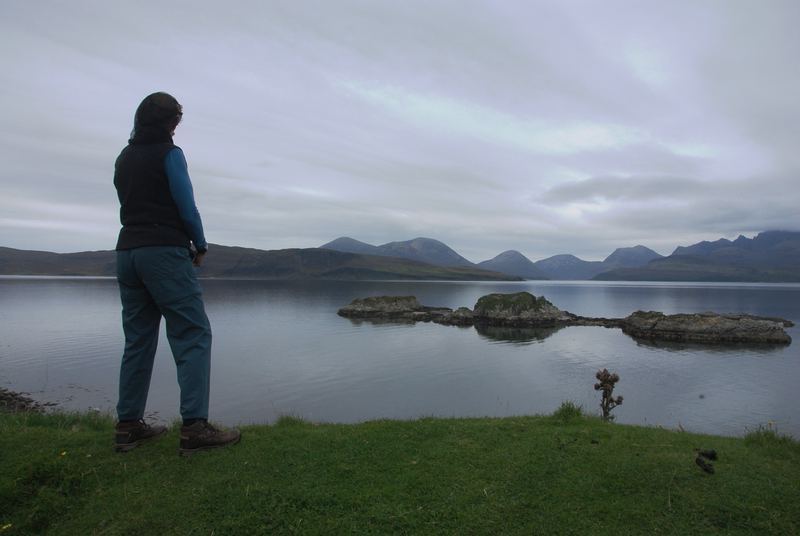 The Cuildheain
The Cuildheain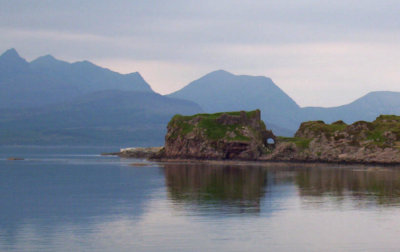 The Warrior Goddess's territory
The Warrior Goddess's territoryToday you'll see some of the Isle of Skye's most hidden and special sacred sites. If you're looking for the Fairy Pools, Fairy Glen or Neist Point, then this is not the tour for you: join the huge crowds on the many tourist busses for which Skye is now known! For today we go to hidden and largely unknown parts of the island, ones that I don't name for good reason. We'll cross the sea by boat to arrive on Eilean a'Cheò, that being the most dramatic and appropriate way to reach this Isle of Mist (as Skye is known in Gàidhlig). We will begin in a remote glen to visit a ruined Iron Age dwelling. You will find a distractingly beautiful landscape - amidst which you'll visit the home of a Warrioress Goddess, a neolithic solar observation, an early Celtic Christian holy well and other places of long-standing pilgrimage...
Day Six
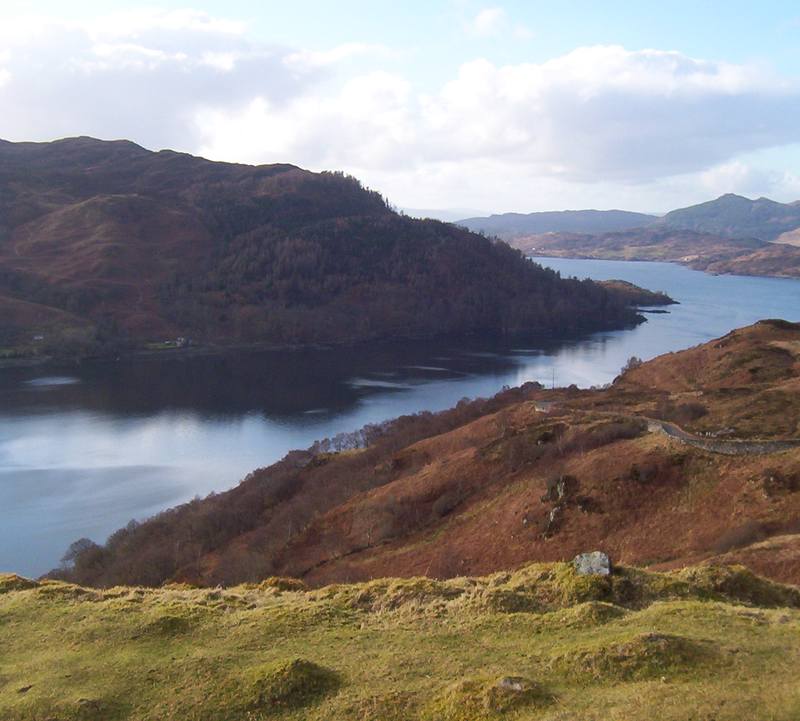 Scotland's West Coast
Scotland's West Coast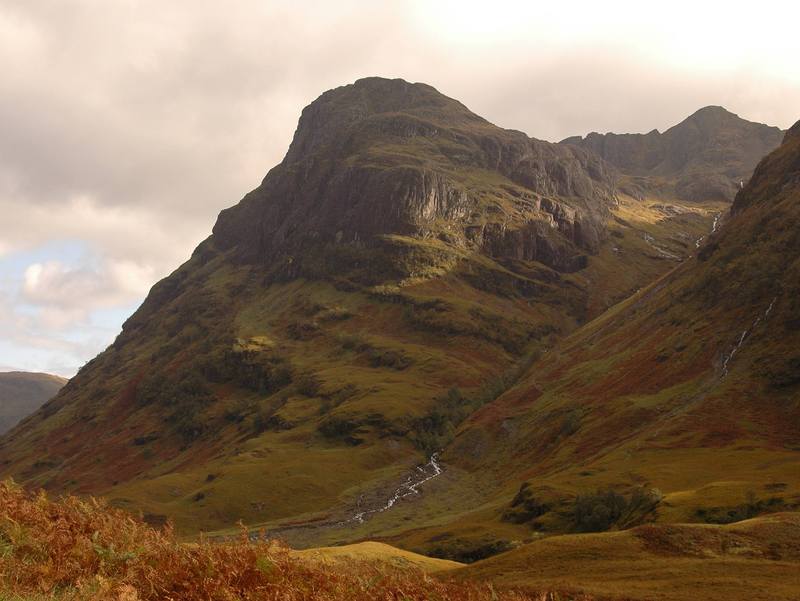 The Three Sisters of Glencoe, Autumn
The Three Sisters of Glencoe, AutumnHaving gone so far north, we must journey south into Argyll, still on the West Coast, but quite different from Skye, both culturally and in landscape. Along the way we'll find time to get a taste of why Glencoe has so many Goddess-in-the-Landscape associations. We'll also hike into the mountain home of the Goddess of the Storms where you can contemplate one of the oldest dieties in Europe, and perhaps meet her goats! (See the short video below).
Days Seven, Eight and Nine
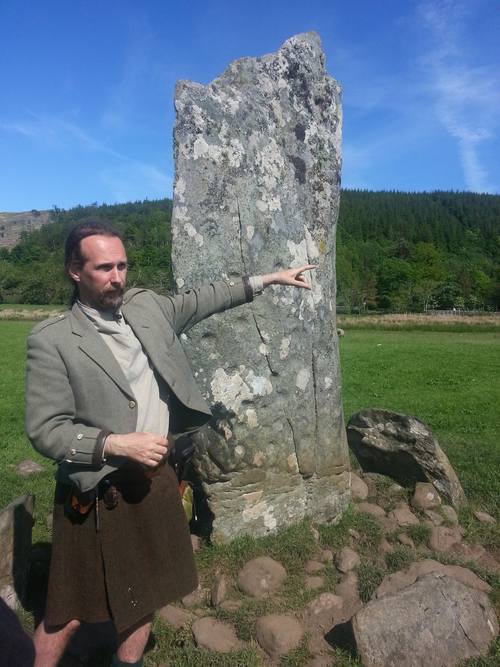 Bronze Age astronmony explained.
Bronze Age astronmony explained.
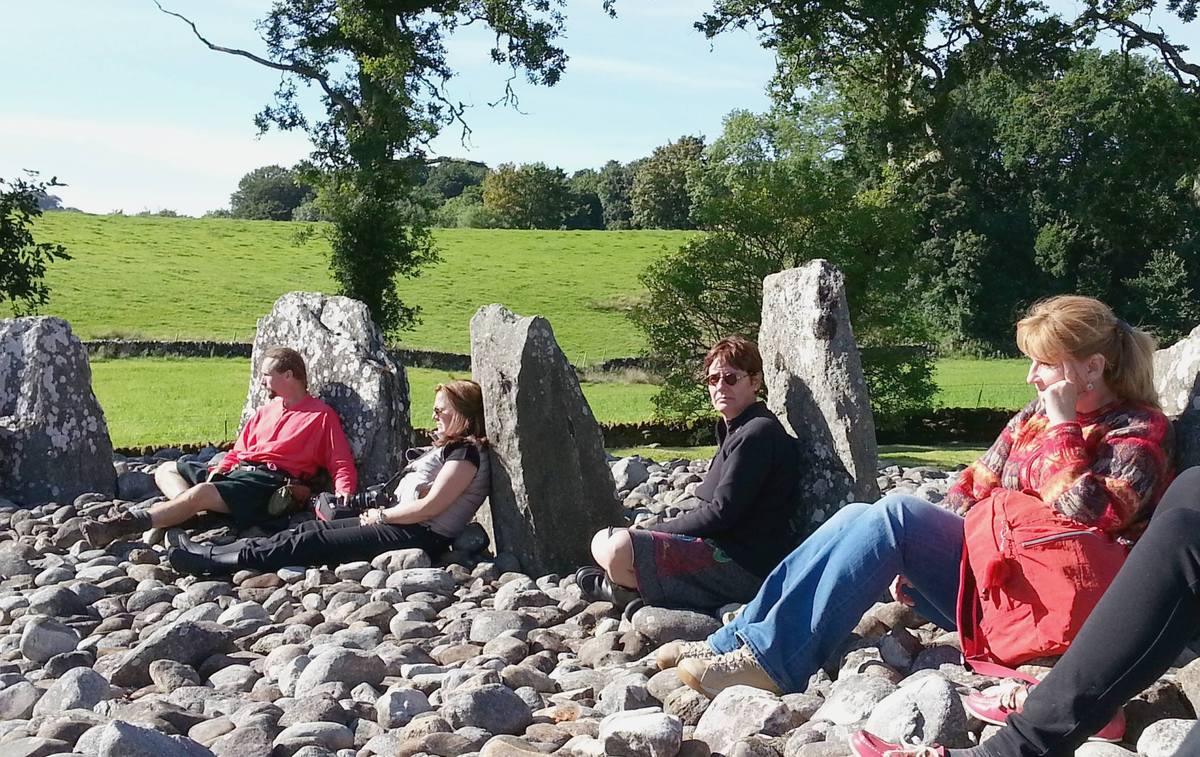 A moment's reflection in a stone circle.
A moment's reflection in a stone circle.©Tour guest Loreen Costa.
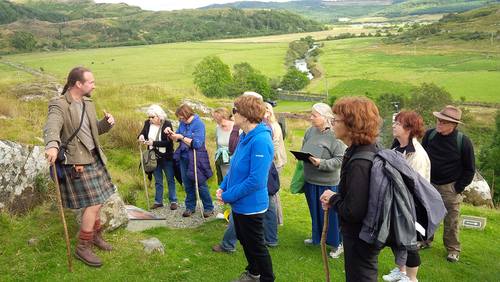 At Dùn Add.
At Dùn Add.©Tour guest Pam Payne.
We'll spend three days exploring this rich area, one of the densest archaeological landscapes in Scotland: Gleann Cille Mhàirtin, home to an astonishing array of stone circles, cairns, henge, carved Celtic crosses and Iron-Age forts covering 6000 years. We will also visit a hidden holy well and the biggest collection of Neolithic rock art in Celtdom. While it is theoretically possible there is guide on the planet that knows the Glen better than me, it is unlikely: I lived amongst these stones for five years.
There are places relatively modern, where a strong sense and understanding of the human spirit can be found. We'll visit a couple of those too.
You'll get an opportunity to hike in the North Atlantic Oak Woodlands, stunningly beautiful and now recognised as ecologically significant as a powerhouse of nature. The sea views aren't bad either!
I've added an extra day to this year's tour. This is the place we will spend that time, adding in sites I have never taken pilgrims to before. We'll visit about fifteen sites in total in The Glen.
Day Ten
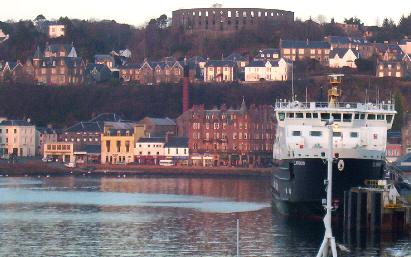 Òban, "Gateway to the Isles".
Òban, "Gateway to the Isles".
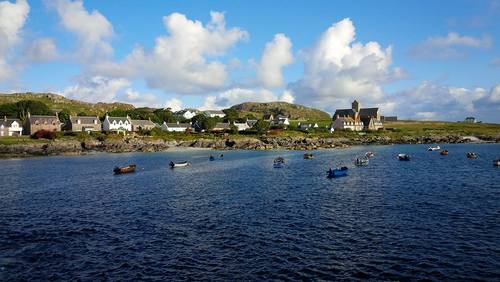 Iona
Iona© Tour guest Pam Payne.
As we leave mainland Argyll we'll hold our Morning Circle at one of the now familiar standing stone sites. On our way north we'll see if we can find an almost forgotten holy well, tidy it and make an offering. You'll get some time in An t-Òban to stock up on items not available in the remoteness of the islands, then we will take to the ferry across the beautiful Firth of Lorn to the wild and unspoilt Isle of Mull for a scenic drive through the mountains. Another short ferry ride takes us over to the holy isle of Iona where we will stay for the next three nights. This evening we will stroll to the ruined nunnery with its sheela-na-gig. You'll have time to attend the Iona Community's evening ceremony of welcome in the Abbey, if you would like.
Days Eleven and Twelve
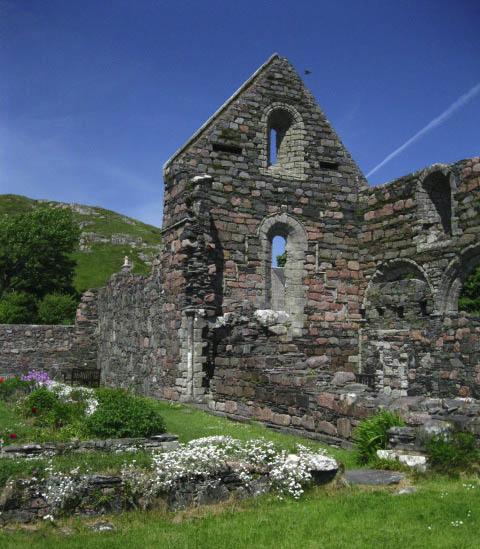 Iona Nunnery
Iona Nunnery
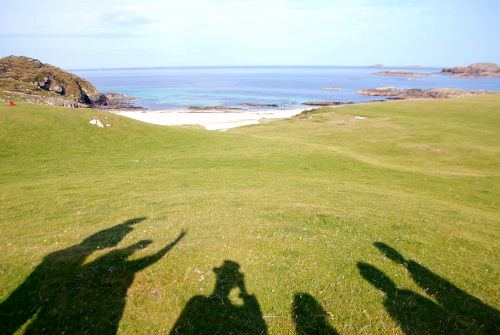 The group, Iona
The group, Iona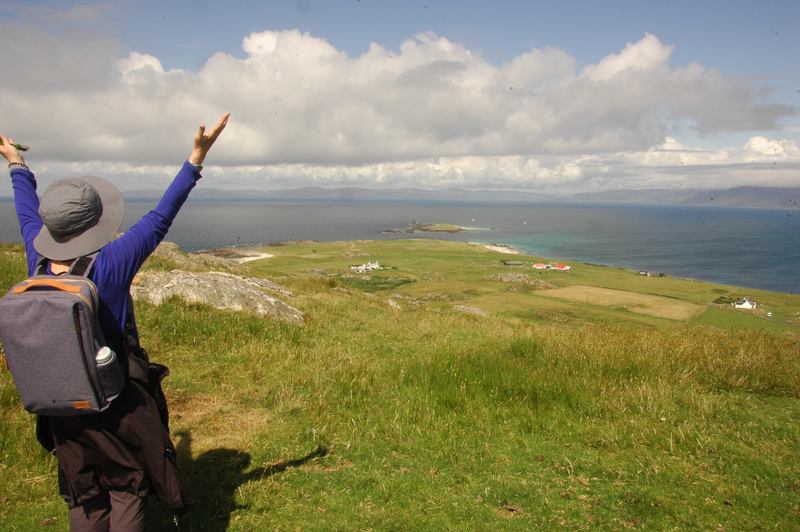 Dun Ì © Jane Duffy
Dun Ì © Jane DuffyGenerally on Iona, the programmed activities are optional and have solo time built around them. Iona needs to be found at your pace. On our first morning we hike the pilrimage route to the "Bay of the Curragh" where Colum Cille (Saint Columba) first landed and where you might find beautiful Iona greenstones. You might choose to walk the labyrinth. After lunch there will be a free afternoon when you can visit the craft studios and bookshops in the village, or find a sandy beach on which to journal. There is the option to take to the sea by sail-boat in this sea-kingdom. This evening, I will host a formal Cèilidh of local Tales, with harp. This is a public, ticketed event that has become something of a tradition over the years of visiting Iona, keeping certain Tales alive for both locals and visitors.
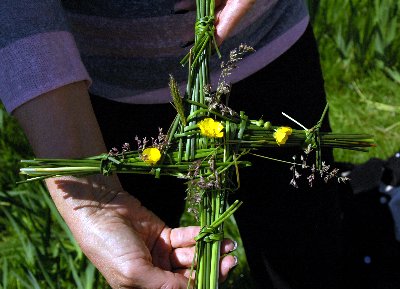 Making Bride's Crosses
Making Bride's Crosses
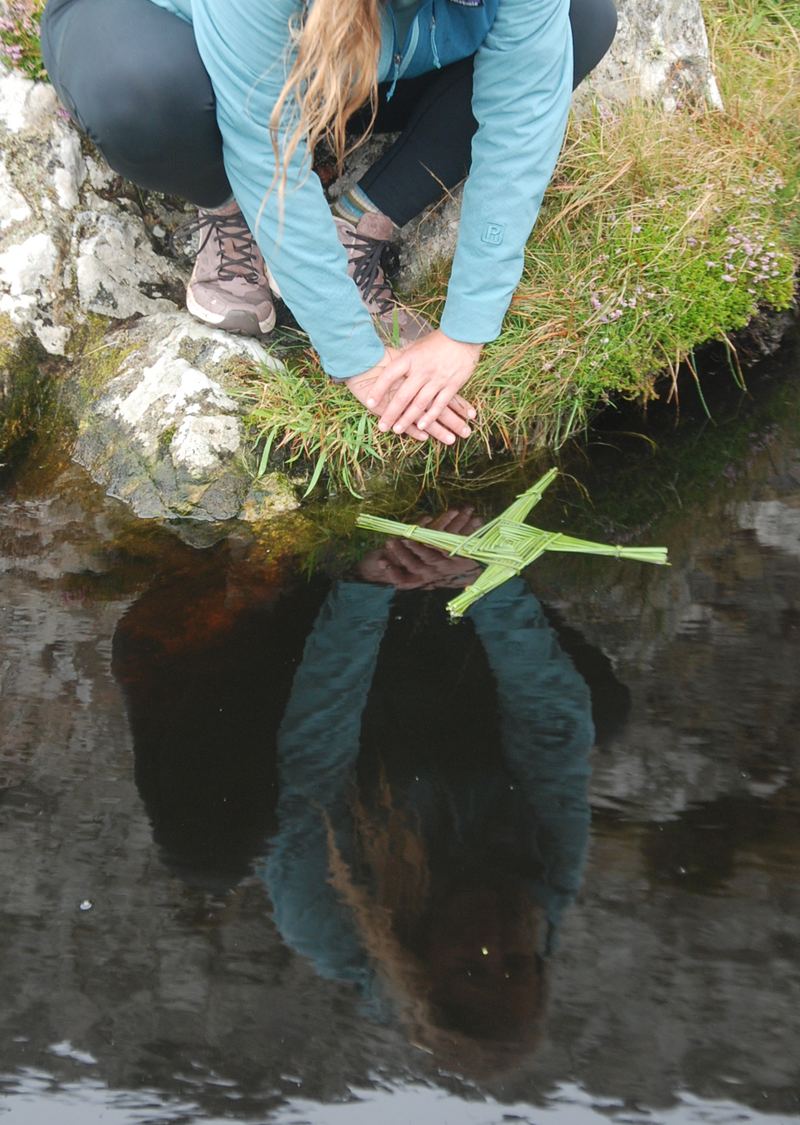 Leaving our Brigit's Cross es in the Well of Ages
Leaving our Brigit's Cross es in the Well of AgesToday's Morning Circle will happen in St Oran's chapel amidst the royal burial ground of Scotland's kings where we can pay our respects to the ancestors. Afterwards, You will learn about Iona's connection with the goddess and saint, Brighid, Brigit or Bride, and gather reeds to weave her crosses. Then we'll climb the holy hill of Dun Ì to Tobar an Aois, the Well of Ages, to bless them in the holy waters. This afternoon you will have alone-time (so important while on Iona) for journaling, integration of the pilgrimage learnings, or meditation, or you can take Historic Scotland's guided tour of Iona Abbey, founded by St. Columba and lovingly restored by the Iona Community and now cared for by Historic Scotland. In the evening gloaming we'll walk to a known faery hill and hear the stories associated with it, both ancient and modern.
Day Thirteen
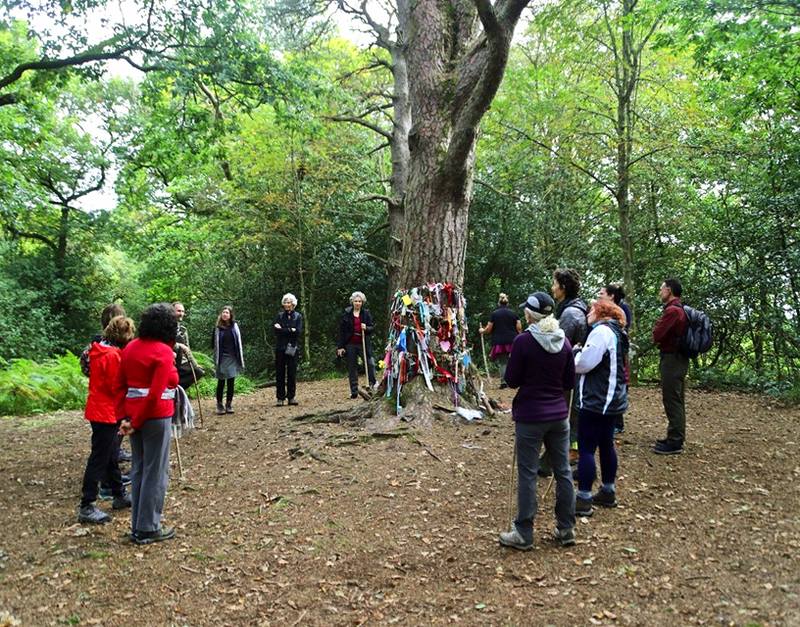 Contemplating the life of a seer © Hamish Burgess
Contemplating the life of a seer © Hamish Burgess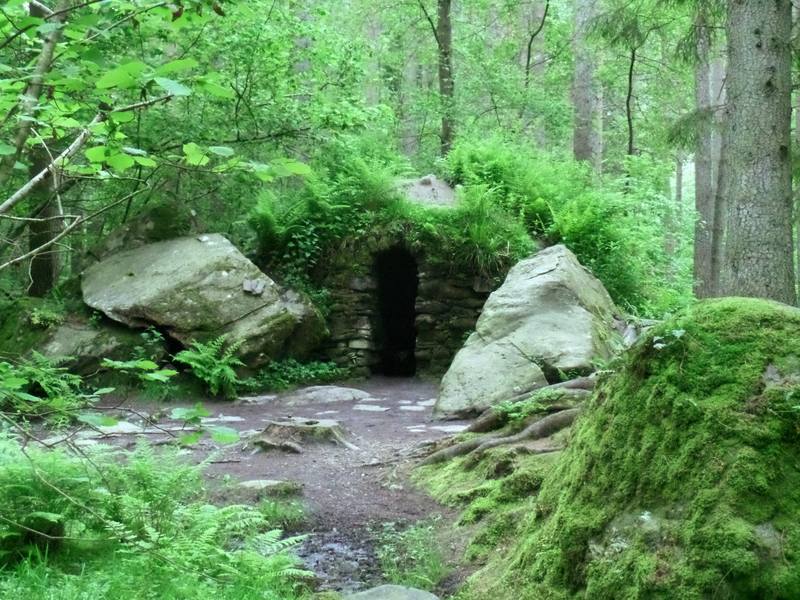 The Homage to Poetry
The Homage to PoetryOur last day, but a full one! Leaving the west and making our way back to Edinburgh there are some places that we'll want to stop, places that show different forms of Celtic beliefs - a pre-Catholic Saint's parish from the 700s, complete with healing stones, and in a land painted by pre-Raphaelites we'll visit one of the few well documented fairy hills. It will make a fine place to hold our closing circle.
Note: We may rearrange the order of the itinerary, usually due to ferry times."...the choice I made to go with you and to wait two years to do so WAS one of the best choices I have ever made. Thank you for showing me a Scotland that is rugged and soft and bold and quiet and haunting and welcoming. Thank you for taking us/me to heart and soul places by using our soles to get there. Thank you for your depth, your perception, your humor and your tolerance. Scotland without Scot would have been so very different. It is through your eyes that it/we/I came alive again, am refreshed again, am emblazoned to seek the passion of living again." Christine Yanitelli 2022.


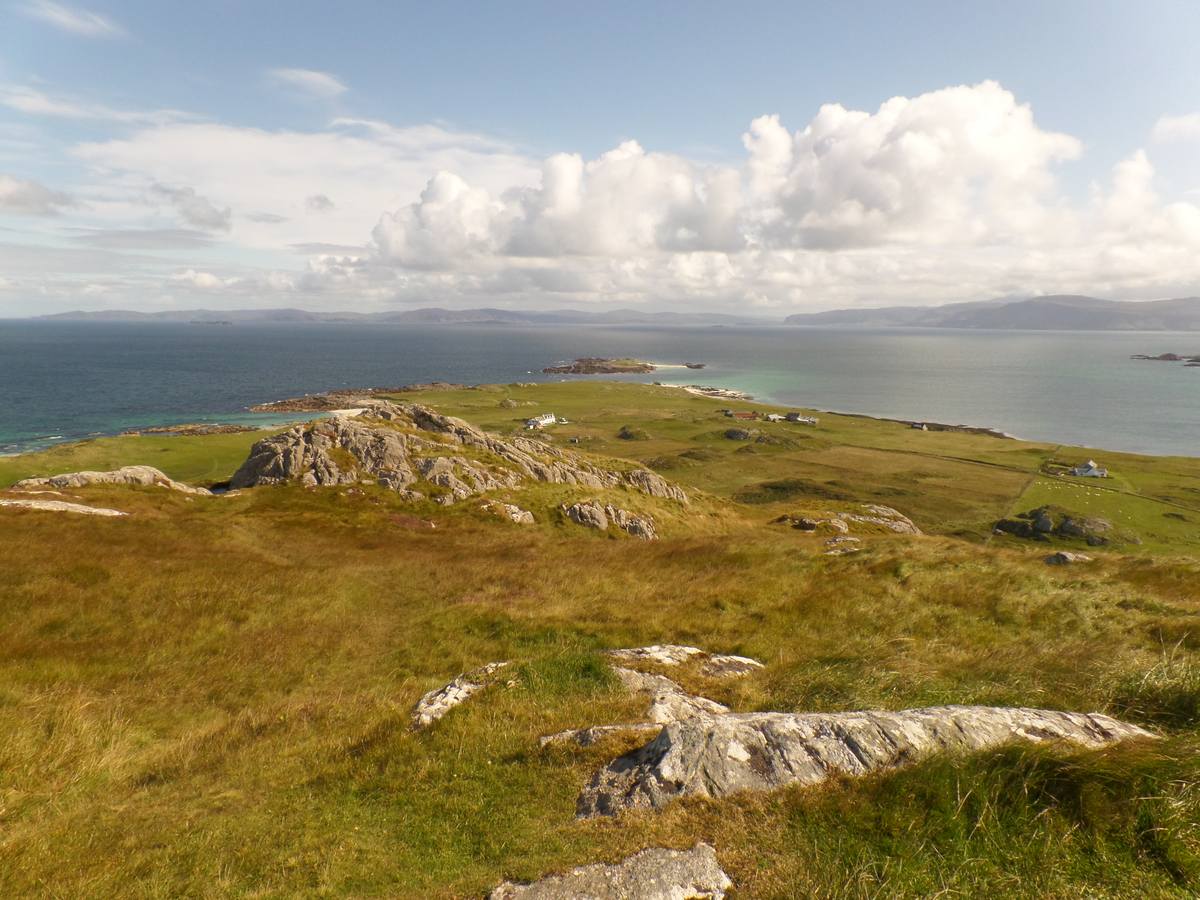
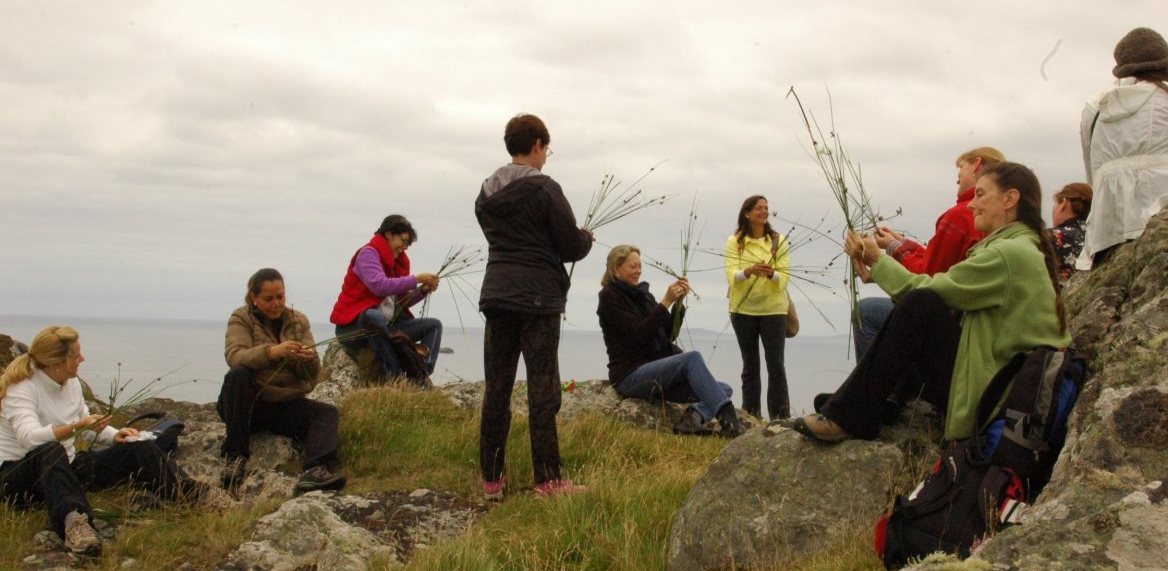
| Tour Price 2026 £3100 per person, sharing twin or double room, £3600 solo traveller, single room (Early bird price until January 2025, £3200 and £3700 from February) (XE.com currency converter)  (Tell me about deposits and balances) (Tell me about deposits and balances)  FYI: Tour booking opens around September in the year before the tour. Places are filled and booking usually closes by about January in the tour year. | |
|---|---|
What's included in the tour price:
|
Not included in the above price:
|
*Everything you need to know about accommodation, deposits and payments is on the TnC page which you should read before booking, while questions about almost everything else tour-related are answered in the FAQ section which you should read before booking, while questions about almost everything else tour-related are answered in the FAQ section of the TnC page. of the TnC page.
** I like to give guests the choice of where, when and how much to eat in the evening, if possible, hence leaving evening meals out of the tour price. In some remote locations, where choice is limited to one hostelry, I book a group dinner reservation. Guests pay for their own meals. See Meals on the FAQ page  | |
Can't make it this year? You can be kept informed of next year's tour date and opening by joining the notification list (via Mailchimp) and selecting "Mara's Spirit of Scotland Tour". Click the button below.
Activity note
As with all my tours, they are active tours, by which I mean you'll be walking on average three miles a day, with more "hike" and less "walk". We spend most of the day on our feet (rather than in a vehicle) with the activity level ranging from strolling through towns to hiking at a good pace into remote glens or climbing rough-pathed, steep hills. A good yardstick to check whether the walking and hiking on the tour will be comfortable for you is the time of your one minute mile walk on the flat: test yourself. No really: go do it and don't just guess. If you can walk a mile in 17-20 minutes, you will find the tour about right; if you always take the stairs at the office in preference to the lift, then this tour is for you; if you always use the elevator in preference to stairs, then this is not the tour for you. Seek elsewhere for a more vehicle-based tour.
Other physical requirements: Guests will carry their own luggage between vehicle and accommodation and for Iona, guests will move their own luggage from the vehicle onto the ferry and off the other side (no vehicles on Iona). In some remote places, the next toilet break might be two hours away, with only Nature's Bathroom as your fallback. When you apply for a place on the tour, you will be asked for some health and medical details. This is used confidentially by the guide to assess whether you will be comfortable on the tour.

